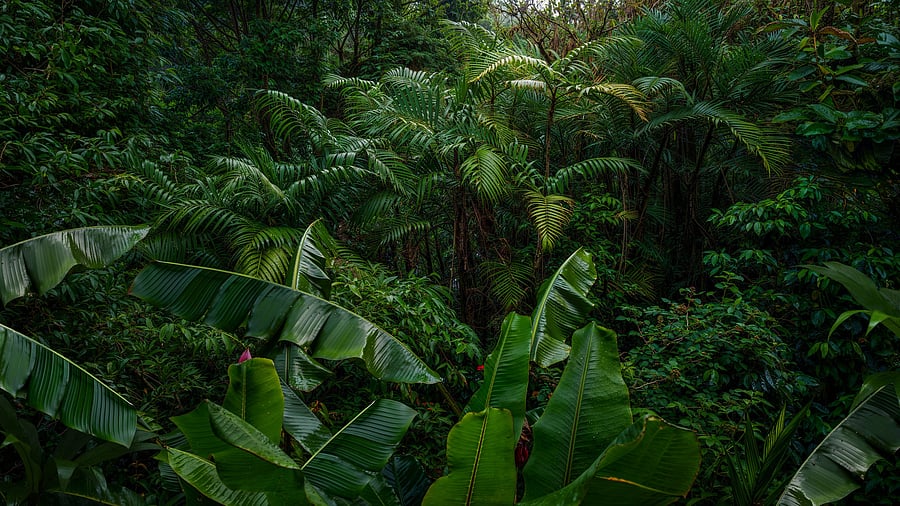
Representative image of a rainforest
Credit: iStock Photo
Humans emerged in Africa around 300,000 years ago, but the exact type of environment we evolved in remains unclear. The dominant view has long been that open grasslands and savannahs were the ecological cradle of our species, while rainforests were seen as barriers to early human expansion, only inhabited much later.
However, research in Asia challenges this view. There is growing evidence of early humans exhibiting advanced behaviours in rainforest settings. On the Indonesian island of Sumatra, humans inhabited rainforest environments approximately 70,000 years ago. In Borneo’s Niah Cave, people processed toxic rainforest plants as early as 45,000 years ago, soon after they arrived in the region. In Sri Lanka, reliance on rainforest resources dates back at least 36,000 years.
These findings suggest that humans were capable of surviving in rainforests even before they left Africa. Yet until recently, the oldest clear evidence of humans living in African rainforests dated to just 18,000 years ago.
A new study has pushed that date much further back. An international research team working in Côte d’Ivoire found that humans lived in Africa’s wet tropical forests as far back as 150,000 years ago.
The discovery centres on the Bétè site in Côte d’Ivoire, first excavated in the 1980s by Professor François Yiodé Guédé during a joint Ivorian-Soviet project. This site features a rare 14-metre sedimentary sequence containing more than 1,500 stone tools. While these tools were found decades ago, their exact age and the environmental context were unknown at the time.
Researchers recently relocated the original excavation site and collected new sediment samples. Using optically stimulated luminescence and electron spin resonance, they dated the quartz grains within the sediment layers. They also analysed the sediment for pollen, phytoliths (microscopic plant silica remains), and leaf wax.
These analyses showed that the area was part of a dense, humid rainforest 150,000 years ago. Pollen and waxes indicated typical West African forest vegetation, including oil palms. Low levels of grass pollen confirmed the site was not just a narrow forest strip but a substantial woodland. This pushes back the timeline for rainforest habitation in Africa by over 100,000 years, indicating that our ancestors adapted to a range of environments, including dense tropical forests, much earlier than previously thought.